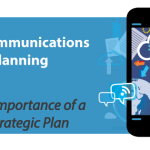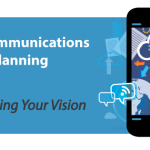One of the biggest misconceptions regarding UC is that many people believe it is a simple phone replacement with a few special features rather than a sophisticated communication project that can reinvent and enhance the way businesses communicate. It’s important to understand the breadth of products and services which are intertwined, in a UC solution, in order to appreciate the work effort required to successfully replace your current phone system.
Taking the commitment to an in-depth “discovery process” will allow you to learn more about your organization, develop new allies for your communication project, and build a sound business case for the appropriate funding.
At Nielsen IT Consulting Inc., we have developed a fluid methodology that we use to successfully plan for communication projects. Part of our methodology includes a four stage “discovery process”. The four key stages that your discovery process should include while developing a successful UC Strategic Plan are as follows:
Investigation
To fully understand the organization, the people, business processes, and technology components must be examined. In order to maintain a holistic approach, perform a top-down assessment of the organization. Focus on activities that address the goals and objectives of the company. This also aids in identifying policies and processes that may not add value to the organization.
Assessment
Once all of the pertinent information and business requirements have been collected from the investigation, they are summarized and evaluated. A comparison of the business requirements to the actual environment will produce a documented gap analysis where the current infrastructure’s strong and weak points are in relation to the business requirements.
Validation
During the entire process, there are several validation check points that need to be completed. The first is to validate the information collected on the existing infrastructure. The second is to validate the identified business requirements. During this validation, it is also important to prioritize the business requirements. The final validation will be of the results of the gap analysis.
Acceptance
The acceptance of the stages identified above is critical to the process. At each step the acceptance of the presented information determines if the project moves forward to the next stage. In addition, having the acceptance of the stakeholders’ aids in project approval.
During these phases, interaction with various individual and organizational units within the company is crucial. This interaction can be in the form of workshops, interviews, observation (i.e. contact centre/help desk live agent performance) and surveys. These interactions and analysis thereof will provide insight into the following:
- Vision – The overall objectives and direction of the organization. This directive typically comes from senior management.
- Requirements – An example of requirements might include but not exclusive to: operational mandates, HR and safety policies, financial procedures, customer interaction, etc.
- Applications The UC tools required to enable users as identified through the investigation and assessment process
- Infrastructure – The systems, licences, services, physical space, etc. required to support the UC environment.
As you can imagine this type of activity, although described at a very high level, takes time and expertise to properly execute. Now’s the time to get educated and get started.
Stay tuned for my next post on the Defining Your Vision.
Emily Nielsen,
UC Specialist & President of Nielsen IT Consulting Inc.
UC Strategic Planning Blog Series – Table of Contents
Having a plan is the first step to leadership. Follow our eight week blog series to learn key actionable items that are crucial to developing an effective UC Strategy for your company.
- Part 1a: UC Considerations
- Part 1b: UC Considerations Continued
- Part 2: The Importance of a Unified Communications Strategic Plan
- Part 3: The Discovery Process
- Part 4: Defining Your Vision
- Part 5: Identifying Corporate Requirements
- Part 6: Identifying UC Applications
- Part 7: Infrastructure Assessment
- Part 8: Final Thoughts




